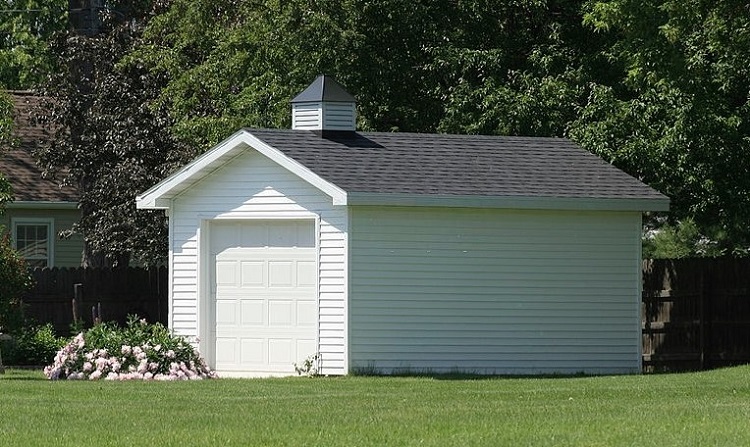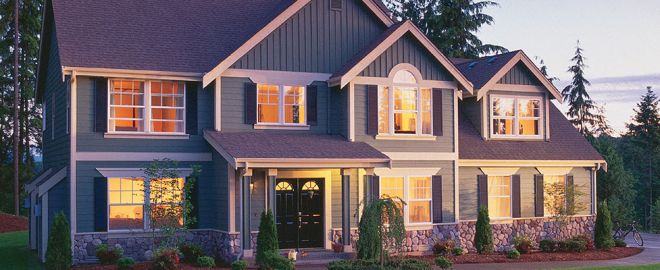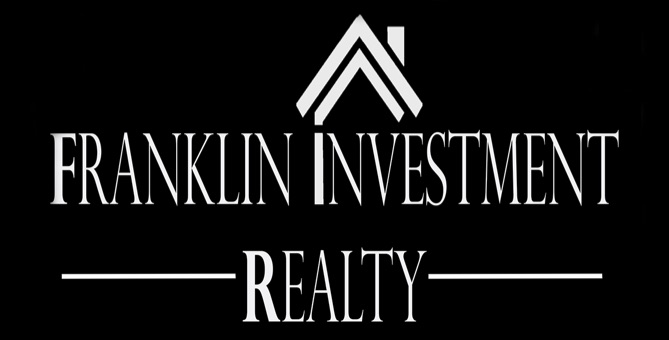2 DIY Ways to Refinish Hardwood Floors (Without Sanding)

Your property’s hardwood floors can take quite a beating. This may be due to tenant turnover (since they move furniture), usual wear and tear, or perhaps even because of pets. In any case, the once-sparkling hardwood flooring in your property may need a touch-up. In this post, we’ll be discussing 2 of the best DIY methods to refresh your flooring without having to deal with the expense and mess of sanding. Using a Chemical Abrasion Kit 1. Clear and Clean the Room Before you begin, make sure that you have removed all partial fixtures and furnishings, including shelves, curtains, and even doors that come in the way. After doing so, clean your hardwood floors with a damp cloth so that all the grime and dust are cleared up. 2. Apply the Chemical and Begin Scrubbing Get hold of the abrasive pad included in the abrasion kit and then carefully pour the chemical to a 4 x 4 section of floor. Using your abrasion pad, scrub firmly over the section and move on to the next. Make sure you prevent spills and puddles because doing so could cause them to seep into the floor. Once you’re done with the entire area, the floor shouldn’t be entirely dry. Instead, a thin film of the chemical should work perfectly. 3. Clean Again After allowing your floor to dry for 30-minutes, mix 2-tablespoons of dishwashing liquid into warm water and then mop over the floor to neutralize the chemical residue. Try to moderately dampen your mop so as to avoid forming clean-up puddles and causing water damage. 4. Touch-Up Deep Scratches Next, get hold of a cotton swab or an artist paintbrush and apply a matching stain inside deeper scratches. Feather over the strain to make sure it blends with your floor, and then dry it up with a hairdryer. 5. Coat the New Finish Before coating your floor, try to plan how you’ll apply the finish, so you don’t get backed up into a corner with nowhere to go. Start by moving along the grain of the floor and make sure not to form any puddles while doing so. Buffing and Polyurethane for Recoating 1. Rent a Buffer Head over to a home improvement store and rent a buffer. It may be a little expensive, but it’s definitely worth the cost. 2. Clean-Up Again, make sure the room is empty and your floors are free from dust or gunk. Also, while cleaning, pay attention to areas that have stripped finishes, dents or deep scratches. 3. Address the Deeper Scratches If you found deep scratches, douse these with mineral spirits (works for lightly-colored floors). Alternatively, you can use a cotton swab or paintbrush to apply a stain that matches your hardwood flooring. 4. Turn the Buffer On For this part of your DIY project, you will require some sanding screens. After your floor has been cleaned up, place a sanding screen under your rental buffer (ask for a tutorial at your home improvement store). It is also important to mention here that sanding screens typically wear out after about 10 to 15 minutes of use. This is why you should keep checking the screen for a buildup of grit, as this will scratch your floor. Now turn your buffer on and move it back and forth from wall to wall and work your way around the room so that you don’t back yourself into a corner or pass over the wood more than you have to. 5. Finish Up After thoroughly vacuuming the room for dust, use oil-based or water-based polyurethane, depending on the type of hardwood floors you’re dealing with. Next, use a high quality paintbrush to apply the finish from wall to wall before using an applicator pad attached to a broom to spread the finish in the direction of the grain. Final Words When it comes to DIY renovation of hardwood flooring, make sure that you consult the experts before going at it on your own. Try to consult a sales representative at the hardware store, a fellow property manager, or a contractor to find out what is best for your needs. In doing so, you will save a lot of time, energy and money. Good luck! – Jivko Stefanov GoodJuJu
How to Prepare Yourself For a Real Estate Audit

Managing a rental property can be a pain in the backside, especially if you’re expecting a real estate audit. Instead of dreading that Godawful date, what you need to do is to make sure your property complies with regulations and strict accounting standards. In short – you need to get audit-ready. What Do Real Estate Auditors Look For? To put it simple, your auditors will look for accountability and accuracy. Don’t mistake their painstaking process for hostility because they will never try to trick you on purpose. What’s more, a real estate audit never has a pass/fail outcome. In reality, a real estate audit only tries to streamline your business practices based on state and federal regulations. In other words, they try to make your real estate business legitimate for the benefit of your investors, partners or tenants. When Can You Expect a Real Estate Audit? Depending on where your rental property is located, you will need to be audit-ready in order to be able to provide monthly reports and accountability check-ins. In contrast, some areas may be subject to random audits or when someone files a complaint against the property. If you can’t seem to find any clear audit schedule for your neighborhood, this does not mean that you are immune to unexpected visits. You see, even the IRS may request your banking documentation and financial records for an audit. By Getting Audit-Ready You Will… Feel a lot less anxious about the audit Make the process easier and painless Be more aligned with state and federal regulations Have up-to-date accounting records Be prepared for annual tax reporting Reduce legal and financial risks How to Prepare for an Audit 1. Dedicate Your Spare Time to Data-Entry and Analysis Prepare accounting statements and analyze your entries whenever you find time to spare from the office or household chores. Of course, if you’re concerned about the shortage of time, you might have to manage office hours in a manner that you can prioritize data-entry accordingly. 2. Don’t Take Shortcuts It might seem like a good idea to skip some details, but don’t expect your real-estate auditors to be as forgiving. What you need is an accounting software that summarizes your accounts with brutal detail and splits them into memos, invoice numbers, transactions, and document checks. Once you get a hang of the software, all you need to do is enter quantities and, perhaps, notes alongside each transaction to annotate correspondences or phone conversations. You can also use some rental property accounting softwares to set reminders to update your compliance documentation and business licenses. 3. Don’t Get Too Creative The only things you accounting software should help you summarize are: Rental property transactions Tenants moving in and out The receipt and returns of security deposits Proof of transactions. 4. Conduct Your Own Audits In doing so, you might come across accounting errors or problems in business documentation and licenses. To help streamline your own in-house audit, you should implement bank reconciliations, review your documents and always check-off what you’ve audited in a checklist. 5. Focus on Transparency Transparency helps reduce the signs of clear mismanagement, fraud or commingling. By adding more transparency into your accounts, your auditors will be satisfied with the degree of detail and accuracy in your ledgers. Need Assistance? You can always hire an experienced property manager, to streamline your tasks for you. By hiring a property manager, your real-estate business will be audit-ready in no time and all you will need to do is make all the decisions or follow-up on their activities whenever your schedule allows you to. – Jivko Stefanov GoodJuJu
What to Evaluate When Considering a Detached Garage

Garages are getting a new, fresh consideration by homeowners these days. Once, garages served one purpose: to house and shelter your car. Today, a garage can serve many purposes, including storage, a playroom for the kids (or a game room for adults), and even a guest room that can be rented out to generate income. If you already have a garage for one purpose, you may be considering a second garage for additional reasons. Great idea, but it takes some serious consideration and planning. Here are just a few things to keep in mind when planning a detached garage: Start with your best reasons for building: Extra storage space Renting the space in order to generate income To house additional vehicles To create some solitude (or a mancave) Build a plan: How large will the garage be? Will it shelter vehicles? More than one? What kind of doors and windows will you include? What type of roof? Will this construction require contractors (and subcontractors)? Know the rules: Does your community require permits or inspections before building begins? Who is liable in case of an accident during and after the construction phase? Check your homeowners insurance. Determine if you are going to need a contractor to help you: Plan to request at least three quotes. Don’t automatically consider the lowest quote. Instead, consider reputations and recommendations. Try not to cut corners. Make sure to check if your contractor is listed with the Better Business Bureau. Trust your gut: does this contractor inspire confidence? Sign a contract so that there are no gray areas or miscommunication about what is needed to be done and when. Consider building materials (and any related building codes): If using a contractor, request a bill of materials (BOM). This is a list of all the materials required for the project. What type of framing (lumber) will you need? What type of foundation materials will you need (most common: cement)? Will your garage be heated or air conditioned? You then need to consider HVAC services and equipment. What type of materials will you need for your roof? What type of door and window materials will you need? Do any of your materials need to comply with your local building codes? Should you consider a prefab detached garage kit? They’re often designed to accommodate one car (but there are exceptions). Some offer additional space for tools and storage. Consider a kit that may also create a guest room or additional housing unit (ADU). How much will this garage cost you? Of course, it all depends on what type of garage you are building and where you are located. $16,766-$38,954, according to Home Advisor $35-$60 per square foot/$19,600-$28,200 average total cost, according to Home Guide. Average cost for a two-car, single story, finished interior, 576 square foot, asphalt shingles, vinyl siding: $52,830, according to Fixr. Bottom line: It’s undeniable: we all need more space. A detached garage on your property may be able to solve logistical problems or help serve a new purpose. However, don’t move forward until you have all of your ducks in a row, knowing what you’re up against, how much the project will cost, and that you are building legally. – Karl Kennedy
Things to Look For in Your Next Home

As you start the home buying process, you will have to consider many important factors, above and beyond your own personal budget and buying power. While this can be a stressful process, there are things you can do to make the process simple and as stress-free as possible. Whether you’re a first-time homebuyer or a current homeowner, you can begin to prepare for the homebuying process by spending some time thinking about the things that are most important to you. At Franklin Investment Realty, we are here to not only help you purchase your next home, but help you truly think through exactly what you want – and need – in your next home. Welcoming Neighborhood One of the most important things to consider, relative to your own personal budget and buying power, is where you want to purchase your new home. Are you looking for a quiet neighborhood with a larger yard (Bucks County)? Or, maybe you’re looking for a new home in a more walkable neighborhood (Old City)? Perhaps you’re shopping close to work, or you’re looking to purchase a home in a specific school district? These are all really important things to consider as you start researching new homes and each answer will be specific to you and your family. With our many years of experience in the greater Philadelphia area, we are confident we can help you explore new neighborhoods and exciting pockets of the city, like Brewerytown and many other booming neighborhoods, and find the area that’s just perfect for you. Cozy Living Spaces and Amenities Another critically important decision you will need to make is determine exactly how much space you need – and how you want that space to be allocated throughout your home. Maybe you’re a chef and an impressive kitchen with ample storage is important to you; or maybe you would prefer a bonus media room for your children or a spare home office. Either way, determining exactly how many bedrooms and bathrooms you need in your next house is an important decision to make as you tour potential new homes. Another important decision you will need to make is to consider if you want your home to be move-in ready, or if you want to be afforded the opportunity to make your home your own with small – or large – renovations. In this housing market, and with our knowledge of the area, Franklin Investment Realty can help you consider the pros and cons of purchasing a move-in-ready home, or a charming fixer-upper that you can customize to be your own. Once you’re settled in your beautiful home, you can stay cozy and warm with an indoor movie night. Make your perfect night-in all the better with a home theater projector and stream your favorite holiday movies or shows anywhere in the house, maybe even outside if the weather allows, or stay indoors cozied up on the couch. To make the season even more special, you can build a hot chocolate bar complete with marshmallows, candies and peppermints. – Karl Kennedy
Exterior Home Projects that Increase Your Home’s Value

Spring will be here before you know it so now is a great time to start planning some exterior renovation projects that will be perfect for the warmer weather and boost your home’s value. The exterior of a home offers plenty of room for upgrades, so let’s go over some of the best projects you can undertake that will not only boost your home’s value but provide you some personal benefit as well. A New Roof The roof of your home has a huge impact on its value. By installing some fresh shingles or other types of roofing, you can achieve a fresh, crisp look up top that will be reflected in your home’s value. You can’t go wrong with new asphalt shingles, but you might also opt for synthetic cedar shakes, rubber slate roof tiles, or natural wood shakes. For an added bump in value, consider attaching some solar panels to your roof as well. Landscaping Another big-ticket upgrade that stands out upon first viewing of a home is a landscaping project. This can take the form of a beautiful, winding stone pathway, a pergola, gazebo, hedges, a garden, or anything else you can come up with. Having some sort of prominent, unique feature in your yard differentiates you from your neighbors and adds value to your home. Improve Your Facade Your facade generally refers to the front of your home. This includes everything from your siding to your front door. Improve it all in one fell swoop for maximum value. You can replace your front door with a newer version or style, or you could simply add a fancy knocker or some window panels. For siding, consider swapping out traditional vinyl for something with more value like fiber cement, stone veneer, or vertical metal siding which are some of the best house siding options on the market today. New Windows Windows play as big of a role in determining the value of your home as many other large features. They can let in natural light and improve the aesthetic tremendously if you pick the right kind. Adding a skylight or two as well as swapping out old windows for newer ones is another highly effective way to add value. Replace your old single-hung windows with more creative styles like a bay window, sliding windows, or even garden windows that allow you to grow flowers or vegetables indoors. Weatherproofing Leaks One easy and super cheap way to add value to your home is by weatherproofing windows and doors. Adding some weatherstripping, an AirDam, or both can eliminate those pesky air leaks and raise the energy efficiency level of your home, adding significant value to it. A New Garage Door Especially if your garage door is facing the street as most garage doors do, you need yours in tip-top shape. Try replacing your old door with a new one for a fresh look. There are plenty of styles and colors to choose from and nothing helps add to a home makeover than a brand new garage door. Upgrading from a manually opened garage door to an electronic one is highly advisable if you haven’t already. If you want to further improve your garage’s curb appeal consider adding a garage trim to it such as a curbed trim. A Pergola for the Backyard Shade is a hot commodity in these times, so give yourself some extra shade by building a pergola in your backyard. A pergola can be like a little oasis of shade, especially if you don’t have many trees in your backyard. There are even companies that offer kits and a full set of instructions for how to build your own pergola. Permeable Driveway If your home deals with driveway flooding at all, this can lower its worth. Raise your home value and remake your driveway by installing a permeable driveway with a built-in driveway drainage system. One of many driveway paving ideas is filling it with beautiful limestone which is even more durable than an asphalt or gravel driveway. Permeable paver driveways provide both style and functional drainage, lowering maintenance costs, and adding value to your property overall. Add a Water Feature A water feature is an excellent way to add some value to your home. By installing a fountain, duck pond, or even a small in-ground pool, you can add some serious character and depth to your backyard and thus achieve a higher asking price on the market. The types of materials to choose from when adding a water feature range from inexpensive to high-class and very expensive, so you have a lot of freedom to take this one as far as you want to. Upgrade your Home Exterior for a Big Boost in Property Value There are plenty of ways you can invest in your home’s exterior to raise its value. From smaller projects like weatherproofing your windows and doors or building a pergola, to slightly larger ones like adding a water feature, building a permeable paver driveway, or swapping out your old garage door for a new one, there’s no shortage of ways to raise your home’s value with some exterior remodeling projects in 2021. Contact Matt Scannapieco for a home value estimate and forecast for these exterior improvements. Matt Lee is the owner of the Innovative Building Materials blog and a content writer for the building materials industry. He is focused on helping fellow homeowners, contractors, and architects discover materials and methods of construction that save money, improve energy efficiency, and increase property value. – Matt Lee
